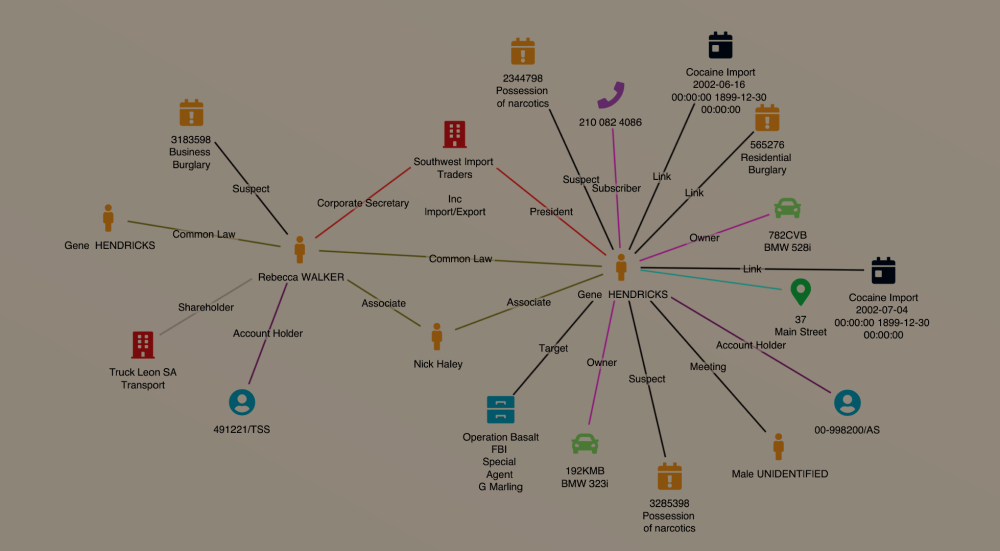The technologies that law enforcement MUST be using to advance VAWG response globally
The stark reality
-
In the UK, a woman is killed by a man every three days[1]. In the United States, nearly three women are killed every day by a partner[2].
-
Domestic abuse makes up 18% of all recorded crime in England and Wales[3]. In the United States, it accounts for 15% of all violent crime[4].
-
In the year ending March 2022, there were 194,683 sexual offences in the UK, of which 70,330 were rape. In the United States 442,754 women reported sexual assaults, of which 133,294 were rape[5].
What’s more, 16% of women vs. 5% of men have reported being sexually harassed online[6]. In fact, in 2022, an alarming 81% of US women and 50% of UK women have been harassed on social media[7]. And with online crime now the most prevalent crime type, there is no sign of this rate decreasing.
What is Law enforcement doing to manage VAWG?
In 2022, the US Department of Justice released updated guidance on Improving Law Enforcement Response to Sexual Assault and Domestic Violence by Identifying and Preventing Gender Bias. The guidance provides a set of eight basic principles that – if integrated into law enforcement agencies policies, trainings, and practices – help ensure that gender bias, either intentionally or unintentionally, does not undermine efforts to keep survivors safe and hold offenders accountable.
In 2021, HM Government, Ministry of Justice and the Home Office in the UK conducted a review into the Criminal Justice System. It found a lack of data sharing and collaboration amongst law enforcement. It also found issues surrounding reduced resources, higher workloads, difficulties in finding evidence due to data overload and that much evidence is stored in disparate systems that do not communicate.
What technologies should law enforcement agencies be adopting to combat VAWG?
Aligning policies and strategies to highlight and tackle VAWG is a positive step forwards, but both US and UK law enforcement agencies must also innovate technologically if they are to keep pace with the rate at which VAWG occurs both online and offline and resolve the issues that are apparent in the justice systems.
All agencies want to ensure that no stone is left unturned in uncovering evidence, but this is difficult, especially when data can now be found in multiple sources and various formats. To overcome this, agencies must have the means to search internal and external sources, seamlessly. Software exists which can achieve this. Key capabilities to look for include:
Automated cleansing and analysis of communications data
Did you know, many law enforcement agencies globally have a huge backlog of devices waiting to be examined? This includes call data records, handset downloads, ANPR/LPR etc. The days of manual data nalysis need to be over. Automation is key and the best solutions in the industry are self-serve and intuitive, meaning multiple roles (not just analysts) can drag and drop files into a data cleansing engine, to be formatted and analysed in seconds to get the answers they need.
With resources tight, workloads high, expertise at a premium and online offences rising, agencies must adopt federated search and entity enrichment tools to expedite investigations. Solutions that can support VAWG investigations are those that are able to bulk search across social media platforms, consented data, and internal files, at the same time. Advanced searches should then be able to be performed on data of significance, to enrich evidence. The best OSINT tools feature IP obfuscated searching to protect your anonymity, plus a capture tools to seamlessly save online evidence before it disappears.
Integration and interoperability
A cutting-edge digital intelligence and investigation platform will have the ability to integrate with, and create custom connectors for, your internal databases and any third-party databases that you use. This is essential for improving efficiencies and ensuring all evidence is accounted for. The interoperability means you only need to query an entity once to search across all of these sources, negating the need to log into multiple systems to obtain the data that you need.
Having the tools to obtain data from multiple sources is essential but having the means to overlay and analyse the various data sets, in one dashboard, is also integral. Dynamic data visualisation helps to spot connections, many of which may have been undetected if the sources were searched separately. You should also have the capability to visualise the data sets in multiple ways and run reports to answer key questions. The ability to perform cross-case analysis on operational and historical files, plus any third-party databases (that the system can API into), to determine if an entity has appeared before is also important. This will help to fast track the attribution process and open lines of enquiry.
Case collaboration and sharing
Many of the problems in both the UK and US criminal justice systems have been compounded by agencies working in silos and not communicating effectively. Any digital investigation software must make case collaboration and data sharing, internally and externally, an automated and secure process.
Courtroom-ready reporting – The demand for material required during investigations has increased and victims suffer when agencies take too long to investigate a case. To overcome this, agencies should have the means to run custom queries on their data, to answer key questions. For example, users should be able to run a report on a suspect’s phone number to identify its top 10 interactions, or to identify potential meetings between suspects, plotted on a map. Once all the significant data has been saved to a case, you should also seek the ability to create automated evidential reports that can be generated to courtroom-ready standards.
To summarise
Technology is key to combatting the challenges that law enforcement faces concerning VAWG investigations. The days of using manual processes to interpret data, relying on multiple, clunky systems that do not communicate and working in silos, must end. Law enforcement agencies should keep pace with the speed at which data is growing and adopt software that can support them in staying one step ahead. This is especially important to counteract the lack of resources and dwindling expertise that has been reported.
Only with technology can agencies improve efficiencies. They can automate the data analysis process and empower multiple roles to share the workload of it through intuitive, self-serve tools.
Only with technology can forces spearhead their OSINT and be confident that they have uncovered all necessary evidence to secure a conviction.
And only with technology can forces find evidence-based answers, fast, by overlaying multiple data types in one dashboard, to spot immediate patterns.
For more information, request a demo of the Chorus Intelligence Suite (CIS) which has been built to support law enforcement in tackling violent crimes, such as VAWG.














